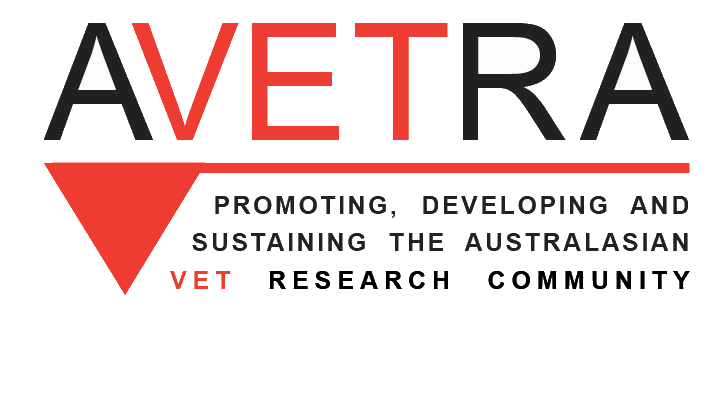A new 22-page policy brief from the European Centre for the Development of Vocational Training (CEDEFOP) entitled ‘Greening apprenticeships: From grassroot initiatives to comprehensive approaches’ suggests that “apprenticeships are particularly well placed to develop the skills for the green transition, as they are at the intersection of the education system and the labour market.”
In another related publication, that we briefly cover, a ‘snapshot review’ from NCVER entitled ‘Driving towards a green economy’, looks at ‘greening’ from another dimension: the automotive industry and the demand for skilled workers in the automotive industry that encompass occupations with EV [Electric Vehicle] skill sets.
As the CEDEFOP policy brief points out:
“The broader approach to what greening means is … reflected in the skills that VET can help develop and strengthen. Skills for the green transition are a wider set of skills and competences, including knowledge, abilities, values and attitudes needed to live, work and act in resource-efficient and sustainable economies and societies … They can be technical (either occupation- specific or cross-sectoral), linked with production processes; or soft and more transversal, linked to sustainable thinking and acting, relevant to work and life.”
There are a range of approaches to greening apprenticeships: bottom-up, top down and sector specific. There are also challenges, however.
In terms of bottom-up approaches in Denmark an example can be found in a school-based building apprenticeship. This is because, “alongside the basics of sustainable building methods and how to use more sustainable materials (technical, craft knowledge), apprentices were introduced to a holistic approach of building processes and organisational development across professions.” In Spain, for example, a program in support of local agro-ecological farms, “set up an initiative to update approximately 1/5 of an existing curriculum with new content blocks, linked to greenification. The content includes biodiversity, efficiency in the use of water, energy saving, use of renewables in farms, reduction of emissions, and overall sustainable tourism and conservation of rural heritage.” It also led to the development of a new occupational profile. Both have had effects at a more national level.
Top-down transversal initiatives may refer to “changes in curricula, standards, and qualifications that help meet the objectives related to greening apprenticeships more effectively and efficiently. A first distinction can be made between transversal approaches and those targeted at specific occupations or sectors.” For example, in Austria,
“Greening has emerged as a megatrend with implications related to technological change, climate change and sustainability, as well as potential for transformation, economic opportunities and job opportunities. Adaptation of apprenticeships in relation to the green transition takes place both transversally and in selected programs.”
Examples from other countries are included too. Moreover, “either because of ‘simultaneous’ political interest or because of actual interconnection of the two, the introduction of green elements in curricula and qualifications often goes hand-in-hand with that of digital skills.”
Sector specific initiatives intend to address direct pressing needs of skills related to the green transition. Developing and maintaining Communities of Practice to foster collaboration, quality improvement and resource development and pressing needs of skills related to the green transition follow a proactive and forward-looking logic, linked to the overall long-term greening strategy of a particular sector. However, the brief suggests that “the search for skill needs not only [needs to be] within the occupation/sector but also in adjacent occupations or across the value chain.”
Challenges
Challenge 1 – Introducing targeted initiatives: The brief noted that “community experts consider that apprenticeship stakeholders do not always have the skills intelligence required to design targeted interventions in relation to the green transition; this is either because skills intelligence mechanisms are not well-functioning or because their outcomes do not reach apprenticeship stakeholders in a meaningful way.” Green transition is often complex and far reaching and this requires a comprehensive understanding of environmental, economic, and technological factors.
Challenge 2 – Scaling up: Bottom-up approaches that are initiated by apprentices, teachers, school leaders, companies or NGOs at local level are a good start for all stakeholders to explore, test, familiarise with concepts and practices. However, only when such practices are channelled into larger- scale, framework level initiatives and standards that the value of apprenticeships in facilitating the green transition can be maximised. Many bottom-up approaches may have scale-up potential, but the actors who have taken initiatives at the local level usually do not have the capacity or the mandate to scale up their work to higher levels across the sector involved. Taking it broader requires the activation of the corresponding stakeholder types.
Challenge 3 – Enabling the contribution of key actors: The brief notes that “community experts see a particular challenge in the engagement of individual companies in relation to greening apprenticeship provision. SMEs may broadly recognise the value and the need to adapt but there are difficulties in understanding the green transition and the implications for their businesses: in terms of technological changes to come, the ways to update their operations and subsequently the exact skills they need to be competitive now and in the longer run.”
Key messages from CEDEFOP’s work
Message 1: Greening approaches are influenced by the differences in apprenticeship models. Most cases of sector specific responses come from countries where apprenticeships are a system of their own and not a simple alternative mode of delivery based in schools. This would be the case in Australia.
Message 2: Apprenticeship adaptation is maximised if underpinned by high-quality skills intelligence. Stakeholders can benefit from high-quality skills intelligence from sectors, regions and workers themselves This is because “many green tech developments often originate outside the sectors affected, and sustainability requirements may come from across the supply chain, interdisciplinary and cross-sectoral logics are essential in the case of the green transition, to capture better how jobs will be evolving and what skills apprenticeships need to develop.”
Message 3: Multi-stakeholder governance structures support adaptation to the green transition. In fact, “multi-stakeholder governance approaches can boost the capacity of apprenticeships to respond to the challenges and opportunities linked to the green transition. They allow structured dialogue among all key stakeholders, offering those representing the labour market a platform to indicate changing skill needs, and expressing their views on how apprenticeship programmes, qualifications and curricula need to be updated or complemented with new ones.” This needs to be matched with flexibility in apprenticeship design processes to give the capacity for apprenticeship systems to adapt to the green transition.
And finally: Collaboration at all levels helps apprenticeship actors cope with change. Multi-stakeholder collaboration needs to run through all levels from the design to the implementation of apprenticeships. This ensures that apprenticeship actors are more likely to receive the support and guidance they need to cope with the requirements arising from the green transition.
A quick postscript from NCVER’s greening work
As their ‘snapshot’ notes: Australia’s goal of reaching net zero “will not be a simple transition. The path towards a strong green economy will require transformations from several industries with regards to new workers, occupations, qualifications, technologies and more.” In relation to the automotive industry, and in spite of difficulties in filling skills shortages, the NCVER data shows there has been a significant growth in skill set enrolments related to battery electric and hybrid electric vehicles since 2018. It’s gone from a total of 10 in 2018 to enrolments of nearly 600 in 2022. In fact, enrolments in VET programs such as Hybrid Electric Vehicle Inspection and Servicing Skill Set had more than doubled between 2021 and 2022.
However, and as the snapshot notes in supporting messages above from Europe:
“The transition to EV skill sets is not without its hurdles. The automotive industry’s struggle to fill occupations, meet skills shortages and its perception issues continue to impact the growth of EV skill sets. However, continued collaborative efforts between governments, industry, training organisations and businesses could overcome these challenges and position Australia as a global leader in sustainable innovation.”








